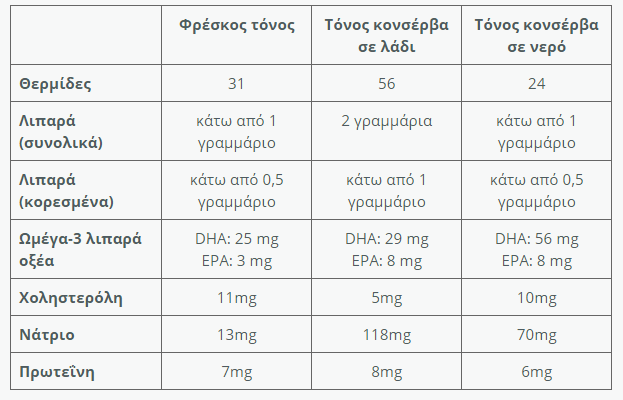Canned tuna may not have the nutritional value of fresh, however, it is high in protein, relatively inexpensive and has a long shelf life.
Canned tuna: They change calories and fat depending on whether they are in oil or water
Tuna has many varieties. Overall, however, it is an excellent source of low-fat, low-calorie protein. Whether canned tuna is packaged in oil or water can affect its nutritional value. Canned tuna packed in oil tends to be higher in calories and fat than canned tuna packed in water. The table below compares basic nutritional information between three different types of tuna (per 28 gram serving): fresh, canned and canned in water. . Overall, canned tuna tends to be higher in sodium than fresh tuna. However, the number of calories and the amount of total fat and saturated fat depends on whether the tuna is packaged in oil or water.
Overall, canned tuna tends to be higher in sodium than fresh tuna. However, the number of calories and the amount of total fat and saturated fat depends on whether the tuna is packaged in oil or water.
Canned tuna: The nutrients vary depending on the brand
The nutrient content may vary from brand to can, depending on how the tuna is packaged, so it is best to check the label. Canned tuna in water may be higher in docosahexaenoic acid (DHA). DHA is a type of omega-3 fatty acid that is especially important for brain and eye health. In addition, both fresh and canned tuna are good sources of many essential vitamins and minerals, such as vitamin D, selenium and iodine.
Canned tuna: Beneficial for heart, eyes, brain and weight loss
There are many benefits to eating canned tuna. In particular, it is a cheap source of protein. It is also preserved for a long time. Some brands can last for 2-5 years in the closet.
If you want to lose weight, canned tuna is a good choice because it is low in calories but high in protein. A high protein diet has been associated with weight loss benefits. Despite being low in fat, canned tuna is still considered a good source of omega-3 fatty acids. Omega-3s are essential dietary fats that are beneficial for heart, eye and brain health. Fish is generally considered an important source of these healthy fats in the diet, although you can also get omega-3s from plant foods. Eating canned tuna is an easy way to increase omega-3s in your diet. The types and amounts of omega-3 fats may vary depending on the type of canned tuna you choose, so read the labels if you want to compare brands. , water or oil and salt. Some brands may also add spices or broth for extra flavor.
Canned tuna: Concerns about mercury, fat and sodium
The main concern with tuna is the mercury content. There are also some potential disadvantages to the fat and sodium content and safety of the can itself. Mercury is a heavy metal that is often found in fish due to water contamination. High exposure to mercury can cause serious health problems in humans, including damage to the central nervous system. Because tuna eats other small fish that may already be contaminated with mercury, this metal can accumulate in high concentrations in tuna. Thus, it tends to be higher in mercury than other types of fish. The amount of mercury depends on the type of tuna. In general, larger tuna varieties, such as bigeye and albacore, tend to have more mercury. Since canned tuna usually contains newer and smaller types of tuna, it is usually lower in mercury than frozen or fresh tuna fillets.
Canned tuna: High mercury content can cause fatigue
Studies have shown that people who eat high-mercury fish at least once a week are more likely to get tired. People should limit their consumption of canned tuna made from albacore to 113 grams a week. This is because it is higher in mercury.
Canned tuna: A small amount should be consumed in children 2-10 years old
Research has shown that exposure to mercury is highly toxic to the developing child's nervous system. For this reason, they should significantly reduce canned tuna in infants and young children. According to the US Food and Drug Administration (FDA), children aged 2–10 years can eat up to 28 grams of low-mercury fish, including canned tuna, two to three times a week. Health authorities have not traditionally recommended the intake of fish in infants in the first year of life. However, some research shows that controlled exposure at an early age is associated with a reduced risk of asthma and eczema. There are currently no recommendations for the consumption of canned tuna in infants. Therefore, it is best to ask your pediatrician how much canned tuna you can safely introduce to your baby and at what age.
Canned tuna: Pregnant and lactating women should eat low-mercury fish
The FDA advises women who are pregnant or breastfeeding to avoid high-mercury fish. Consumption of canned albacore tuna should not exceed 113 grams per week. However, the FDA says it is safe for pregnant and lactating women to eat low-mercury fish. Recommends two to three servings of 113 grams per week.
via
